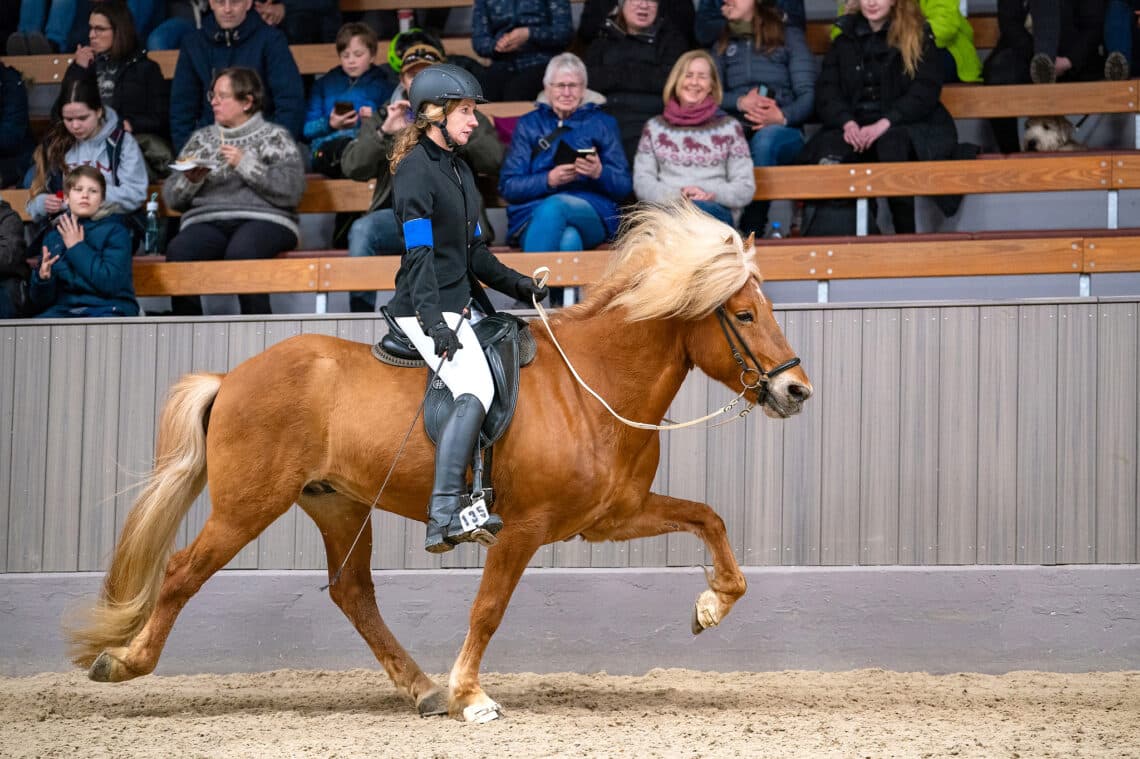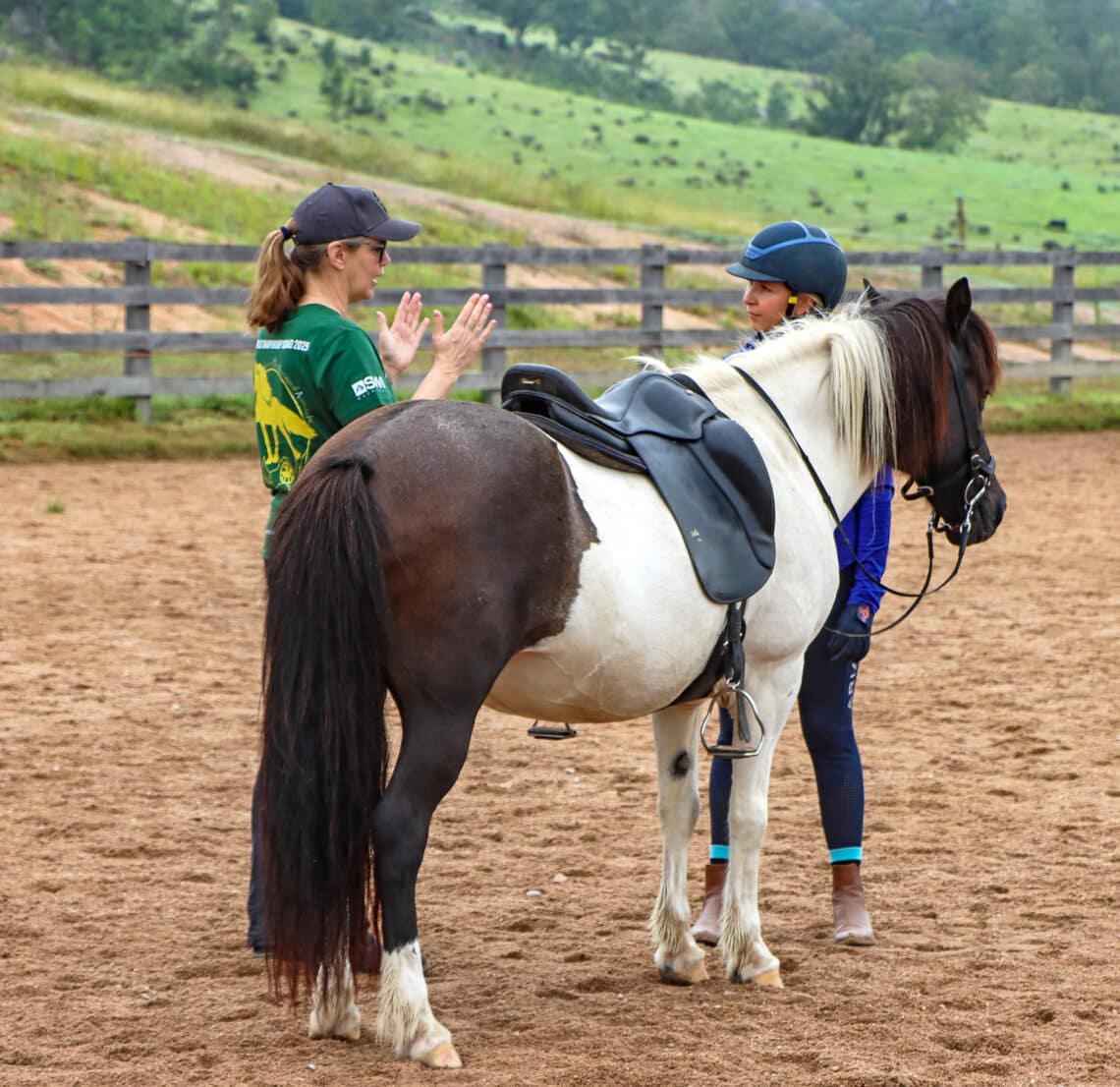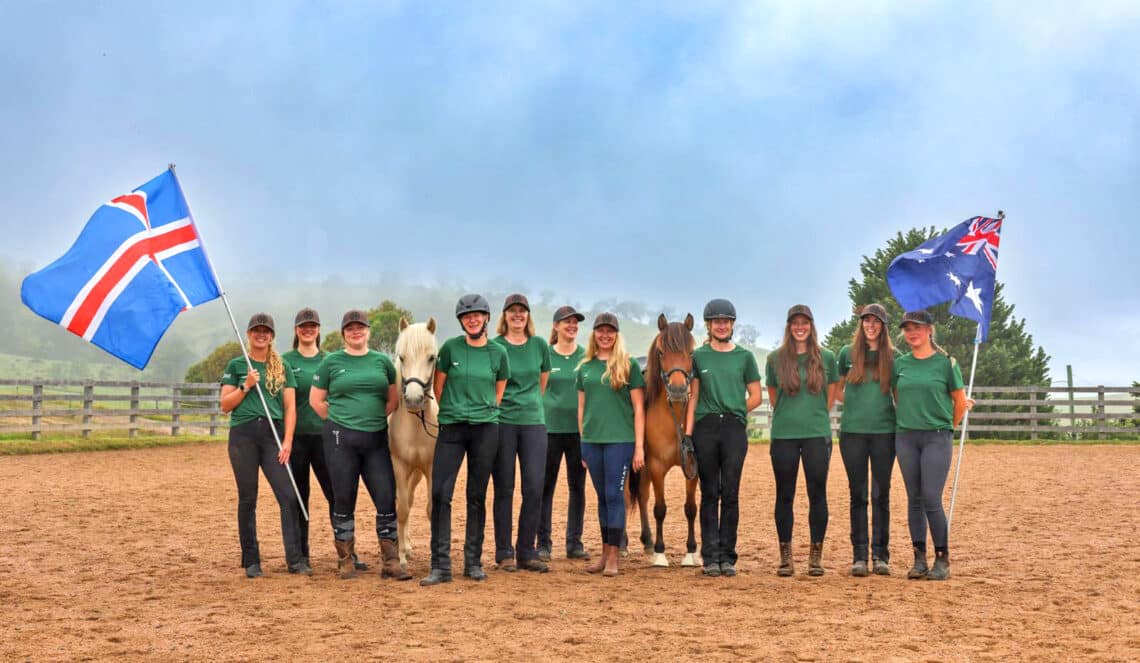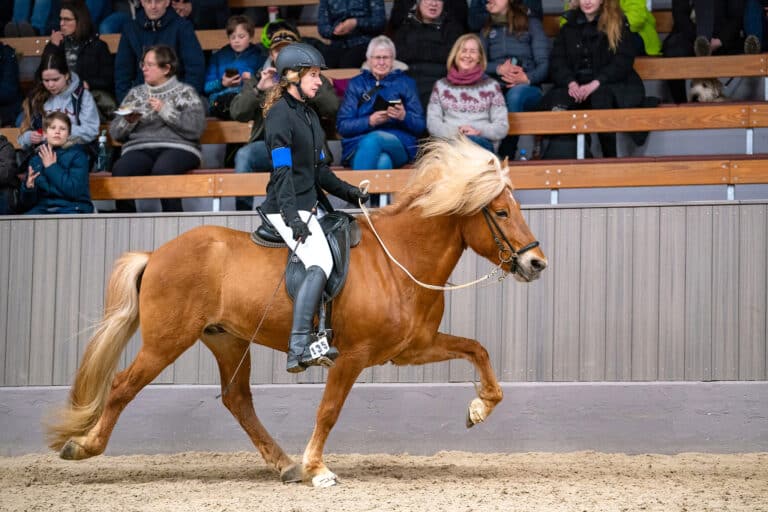
On track for the World Championships
In an exciting first, Australia will be competing at the Icelandic Horse World Championships in 2025. AMANDA MAC spoke with Laura Hall-Smith to learn more.
It might at first seem a little left of centre for a team of Australian riders to be competing at the Icelandic Horse World Championships. Nevertheless, for the very first time, Australia will be one of 22 international teams vying for honours during the week-long event, set to commence in early August 2025 in Birmenstorf, Switzerland.

With an estimated 13,000 people likely to attend, Laura Hall-Smith, a member of the Australian team training squad, is excited. “It’s a fantastic opportunity to bring back valuable information for members of our community, as well as to promote the breed here and continue to grow the Icelandic Horse Association of Australia,” she says.
There’s certainly an increased awareness of the Icelandic breed in this country, and for very good reason. Standing on average between 13hh and 14hh, these horses are renowned for their endurance and athleticism. They’re independent, adaptable, friendly, willing, sure-footed and strong, and shine in any number of disciplines, including working equitation, dressage, trail riding, jumping, and endurance events.
Clearly, the breed offers plusses aplenty, but perhaps one of the Icelandic’s most interesting characteristics is their ability to be either four or five gaited. A four gaited horse has walk, trot, tölt and gallop/canter, while a five gaited horse has an additional gear, the flying pace or skeið. The tölt and skeið are made possible by a mutation in the DMRT3 gene, responsible for synchronising the left and right sides of a horse’s body. In the Icelandic (and some other breeds) this mutation allows them to move their legs laterally as well as diagonally – essentially, to be able to pace.
The four-beat tölt is a lateral gait in which the horse maintains one or two hooves on the ground at all times. This means that there is no suspension, making the tölt a very smooth, comfortable, almost bounce-free ride even at speeds of up to 32 kilometres an hour.
Faster still is the two-beat skeið. Capable of generating speeds of just under 50 kilometres an hour, at one point during the movement all four of the horse’s hooves are suspended above the ground, earning it its ‘flying’ title.

But let’s get back to Laura and the training squad. Unusual for an Australian born and bred, Laura has a long history with Icelandic horses. “When Mum was 17, she went to Denmark as an exchange student. Her host family owned an Icelandic horse stud and after she came home, she stayed in contact with them,” she tells me.
Fast forward and every few years, Laura’s mother, by then a vet with a busy practice, would take Laura and her brother on holiday to Denmark, which included visits to the horse stud and rides through the forests on Icelandic horses. “Obviously they’re not a common breed in Australia, and to have been involved with them my whole life is pretty special,” she says.
For Laura, who is based in North West NSW with three Icelandics of her own, the breed’s personality is certainly part of the attraction: “They’re a very sweet, personable horse with so much heart. They’re strong, often quite forward, and a lot of fun. An Icelandic will take on any challenge you put their way and because they can carry adults as well as younger riders, you never grow out of them.”
The 10 member training team are all equally passionate about the breed, and are busy working towards next year’s championships. And it’s a multi-national effort in more ways than one! There are two Australians, one American, two Swedes, two Dutch and three Germans. Laura is the only Australian wanting to compete in the championships, and if she makes the cut, hopes to show the international Icelandic horse community that Australia is also embracing the breed.
The team also have a team manager here in Australia and another one in Germany. Anna Eschner, their German coach, has been training them virtually although she was in Australia in February this year for the first team session, and will be back next February when the final squad is selected.
Under the rules of the International Federation of Icelandic Horse Associations (FEIF), a national team at the World Championships for Icelandic Horses can be comprised of up to seven rider/horse combinations and a reserve horse, a reserve rider, or a reserve rider/horse combination. “There are seven of us wanting to compete,” Laura explains, “and hopefully all seven of us will be good enough to be selected, but the current thinking is a team of four to six who will actually compete.”
To be eligible for selection, the rider must have had experience competing in Icelandic horse competitions. Some members of the team have already fulfilled that criteria – and last month Laura travelled to Norway to compete. “It was an expensive box to tick, but I was excited to do it,” she says.

Over the eight days of competition, the Championships feature a variety of events designed to demonstrate the versatility and unique abilities of the Icelandic horse. There are competitions for different speeds and styles of tölt; four gait and five gait events to test the horse’s ability to perform multiple gaits, including walk, trot, canter, tölt, and skeið; and an exciting high-speed event where horses race over a short distance in skeið, the flying pace.
Riders aged from 16 to 21 years have the opportunity to showcase their skills in the Young Rider classes; then there are the team events, in which teams from around the globe compete to earn points, hoping to reach a total score of 12; while judges in the breed classes evaluate each horse’s conformation, movement, and overall quality to assess their suitability as breeding stock.
The ridden events are certainly a test of skill and ability for both horse and rider, and are fascinating to watch. “One of the elements of a tölt test is to complete a lap of an oval track riding the horse on the buckle, so with no contact on the mouth. One hand is on the rein and the other arm dropped down by your side, all while keeping the horse in tölt,” Laura explains. “Then there are the pace races when two horses at a time are released from the barrier. To start with, they can gallop, but at a certain point their riders must get them into flying pace. It’s amazing to watch, and I think that’d be so much fun to ride in.”
Laura tells me that the anticipated arrival of the Australian team has caused quite a stir: “There’s a lot of excitement about Australia competing, and a lot is being done to help us. It’s been a phenomenal response so far, and it’s only going to grow as more of the international community becomes aware that we’re coming.”
With an estimated cost to compete of approximately $20,000 per rider, so the team is now busily organising fundraisers and looking for sponsors. And to help them on their way, two big fundraising days have been planned, one at Terarossa Equestrian Centre in Wangoom VIC on the 27th of this month, and the other at Megalong Icelandic Horses in Megalong Valley NSW on 23rd November. Better save the date!
Interested in learning more? Visit the Icelandic Horse Association of Australia, the Icelandic Horse World Championships site, and the FEIF on Facebook.



